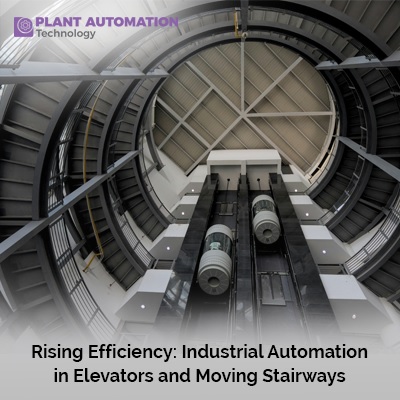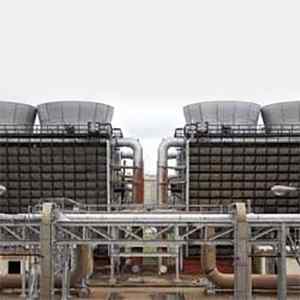Rising Efficiency: Industrial Automation in Elevators and Moving Stairways

In the realm of modern infrastructure and urban design, the role of elevators and moving stairways, also known as escalators, is paramount. These vertical transport systems not only facilitate seamless movement within buildings but also play a crucial role in enhancing efficiency, safety, and user experience. With advancements in industrial automation, elevators and escalators have undergone significant transformations, leading to rising efficiency and improved performance across various sectors. This article delves into the realm of industrial automation in elevators and moving stairways, exploring the technologies driving efficiency, benefits, challenges, and future trends in this dynamic field.
I. Evolution of Elevators and Escalators
The history of elevators dates back centuries, with early designs using pulleys and ropes for vertical transport. However, it was the invention of the safety elevator by Elisha Otis in the mid-19th century that revolutionized the industry. This breakthrough introduced safety mechanisms such as the elevator brake, ensuring passenger safety and enabling the construction of taller buildings.
Similarly, escalators have a rich history, with the first operational escalator installed at the Paris Exposition in 1900. Over the decades, escalator designs evolved, incorporating automated controls, safety features, and improved efficiency.
II. Impact of Industrial Automation
Industrial automation has profoundly impacted the efficiency of elevators and escalators. Automation systems utilize advanced technologies such as sensors, actuators, machine learning algorithms, and Internet of Things (IoT) connectivity to optimize performance, energy consumption, and maintenance.
Traffic Management Systems: One key area of automation is traffic management, where sophisticated algorithms analyze passenger traffic patterns to optimize elevator and escalator operations. These systems minimize wait times, reduce congestion, and enhance passenger flow, especially in high-rise buildings and crowded spaces.
Predictive Maintenance: Automation enables predictive maintenance, where sensors monitor equipment health in real-time. This proactive approach allows for timely repairs and reduces downtime, ensuring optimal performance and safety.
Energy Efficiency: Automation plays a vital role in energy management, with systems adjusting power consumption based on demand. Energy-efficient motors, regenerative braking, and smart controls contribute to sustainable operation and reduced carbon footprint.
Remote Monitoring and Diagnostics: Automation systems enable remote monitoring and diagnostics, allowing technicians to identify issues and perform troubleshooting remotely. This capability minimizes service disruptions and enhances overall system reliability.
III. Benefits of Automation in Vertical Transport
The integration of industrial automation in elevators and escalators brings forth a myriad of benefits:
Enhanced Safety: Automation systems incorporate advanced safety features such as anti-collision sensors, emergency stop mechanisms, and fire evacuation protocols, ensuring passenger safety during emergencies.
Improved Efficiency: Automated traffic management optimizes transport efficiency, reducing wait times, increasing throughput, and improving overall building accessibility.
Cost Savings: Predictive maintenance and energy-efficient operation lead to cost savings in maintenance and energy expenses, making automation a financially viable investment.
User Experience: Smoother rides, reduced wait times, and intuitive interfaces enhance the user experience, making vertical transport systems more user-friendly and accessible.
IV. Challenges and Considerations
Despite its numerous benefits, industrial automation in elevators and escalators presents some challenges and considerations:
Cybersecurity: With increased connectivity comes the risk of cybersecurity threats. Elevator and escalator systems must have robust cybersecurity measures to protect against potential breaches and unauthorized access.
Integration Complexity: Integrating automation systems with existing infrastructure can be complex and requires careful planning and coordination to ensure compatibility and seamless operation.
Regulatory Compliance: Automation systems must comply with regulatory standards and safety codes to ensure adherence to industry guidelines and protect user safety.
Skill Development: As automation technologies evolve, training and upskilling of maintenance personnel and technicians become crucial to effectively manage and maintain automated systems.
V. Future Trends in Industrial Automation
Looking ahead, several trends are shaping the future of industrial automation in elevators and escalators:
Artificial Intelligence (AI) Integration: AI-powered systems will enable predictive analytics, dynamic scheduling, and personalized user experiences, further enhancing efficiency and user satisfaction.
IoT Connectivity: Increased IoT integration will facilitate real-time data collection, remote monitoring, and predictive maintenance, leading to improved reliability and performance.
Robotics and Autonomous Systems: Advancements in robotics and autonomous systems may lead to the development of self-diagnosing and self-repairing elevators and escalators, reducing downtime and enhancing reliability.
Sustainable Solutions: The focus on sustainability will drive the adoption of eco-friendly materials, energy-efficient designs, and renewable energy sources, aligning vertical transport systems with global environmental goals.
Conclusion
Industrial automation has revolutionized the efficiency, safety, and performance of elevators and escalators, making them indispensable components of modern infrastructure. With continuous advancements in technology and a focus on innovation, the future of vertical transport systems promises increased reliability, sustainability, and user-centric design. Embracing industrial automation not only enhances operational efficiency but also elevates the overall experience of navigating vertical spaces, contributing to smarter, safer, and more sustainable cities.







